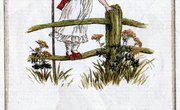When we talk about language comprehension in 4- or 5-year-olds, we are talking about understanding spoken words and sentences. This not only sets the stage for reading comprehension later on, but helps preschoolers follow directions and develop larger vocabularies in the now. And while you don't want to start handing worksheets to a 4-year-old, you can start doing more structured language activities with him at this age.
Read Aloud
Hopefully, you already read to your 4 or 5-year-old every day. If you don't, start now. Nothing improves language comprehension more than read aloud, especially when parents and kids discuss the book while reading. Encourage your child to ask what new words mean and predict what's going to happen next in the story. With this age group, picture books are the most appropriate choices. Dr.Seuss, with all of his made-up words, is great for building language comprehension. Preschoolers must use clues, such as the illustrations, to figure out what each new word is. Books with predictable text are another good option like any of Eric Carle's books. Children can learn to predict what is coming next.
Dramatization
If your child wants you to read the same book over and over, that's the perfect time to improve language comprehension. You can act out the story together or at least let her "read" certain parts of the story to you. Mo Willems' Elephant and Piggie series, which has two easily voiced characters, is great for dramatization. In books where more characters are involved, you can still act them out by using puppets, dolls or stuffed animals.
Simon Says
Simon Says was a language comprehension activity before parents and teachers worried about language comprehension. The simple game, where the leader (Simon) gives directions but children only follow if the directions are preceded by "Simon says. . . .", can be used to teach many things. Obviously, it improves listening skills as children listen for the directions. But it can also be used to teach body-part vocabulary as you move from giving directions about pointing to your tummy to more challenging words like elbow or wrist. It can be used to teach emotion vocabulary as you tell children to make scared or happy faces. It can be used to teach movement and counting as you have children jump one time or clap their hands two times. Plus, it can be taught anywhere for free!
Treasure Hunt
You can make this activity as complicated or as simple as your time and budget will allow. The idea is to create a series of clues that will lead your preschooler to a small "treasure" like a special snack, picture book or small toy. The clues can be in picture form, or you can read them to your child, depending on your drawing skills. The first time you try this activity, use only two or three clues. If your child enjoys the activity, then you can work up to using four or five more complex clues. You can also have your child help you create a treasure hunt for an older sibling, another caregiver or a friend.
Related Articles
References
Resources
Writer Bio
Jennifer Zimmerman is a former preschool and elementary teacher who has been writing professionally since 2007. She has written numerous articles for The Bump, Band Back Together, Prefab and other websites, and has edited scripts and reports for DWJ Television and Inversion Productions. She is a graduate of Boston University and Lewis and Clark College.











